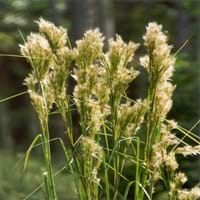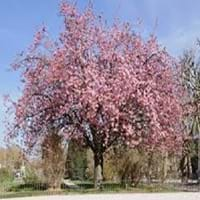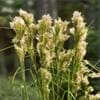Life Span
Perennial
Perennial
Origin
Caribbean, Central America
China, Japan, Korea
Types
Broomsedge Bluestem, Broomsedge
Amanogawa , Shirotae , Shogetsu
Habitat
ditches, Grassland, Moist Ditches, Moist Soils, Roadsides
Woodlands
USDA Hardiness Zone
5-9
6-8
Sunset Zone
H1, 3a, 3b, 4, 5, 6, 7, 8, 9, 14, 15, 16, 17, 18, 19, 20, 21, 22, 23, 24
2b, 3a, 3b, 4, 5, 6, 7, 12, 14, 15, 16, 17, 18, 19, 20
Habit
Upright/Erect
Arching/Fountain-shaped
Flower Color
Cream, Green, White
Pink
Flower Color Modifier
Bicolor
Bicolor
Fruit Color
Not Available
Not Available
Leaf Color in Spring
Green, Blue Green
Green, Plum
Leaf Color in Summer
Light Green
Green
Leaf Color in Fall
Gray Green, Yellow green, Bronze
Gold, Orange Red
Leaf Color in Winter
Gold, Tan, Bronze
Not Available
Leaf Shape
Grass like
Pinnate
Plant Season
Fall, Winter
Spring, Fall
Sunlight
Full Sun, Partial Sun
Full Sun, Partial Sun
Growth Rate
Medium
Medium
Type of Soil
Clay, Loam, Sand
Clay, Loam, Sand
The pH of Soil
Acidic, Neutral, Alkaline
Acidic, Neutral
Soil Drainage
Average
Well drained
Bloom Time
Late Summer, Early Fall, Fall, Late Fall, Early Winter
Early Spring
Tolerances
Not Available
Not Available
Where to Plant?
Ground
Ground
How to Plant?
Root Division, Seedlings
Grafting, Stem Cutting
Plant Maintenance
Medium
High
Watering Requirements
Keep ground moist, Water Deeply
Keep the ground moist but not water-logged
In Summer
Lots of watering
Lots of watering
In Spring
Moderate
Moderate
In Winter
Average Water
Average Water
Soil pH
Acidic, Neutral, Alkaline
Acidic, Neutral
Soil Type
Clay, Loam, Sand
Clay, Loam, Sand
Soil Drainage Capacity
Average
Well drained
Sun Exposure
Full Sun, Partial Sun
Full Sun, Partial Sun
Pruning
Cut or pinch the stems, Remove damaged leaves, Remove dead branches, Remove dead leaves
prune to control shape, Remove damaged leaves, Remove dead branches, Remove dead leaves
Fertilizers
All-Purpose Liquid Fertilizer
All-Purpose Liquid Fertilizer, slow-release fertilizers
Pests and Diseases
Red blotch
Aphids, Bacterial leaf spot, Borers, Caterpillars, Scale insects, Spider mites
Plant Tolerance
Drought
Drought
Flower Petal Number
Single
Double
Foliage Texture
Coarse
Medium
Foliage Sheen
Matte
Glossy
Attracts
Birds, Butterflies
Aphids, Birds, Not Available
Allergy
Not Available
Unknown
Aesthetic Uses
Ground Cover
along a porch, deck or patio, Beautification, Cottage Garden, Wild gardens
Beauty Benefits
Not Available
Not Available
Environmental Uses
Air purification, Food for animals, Food for birds, Provides ground cover, Wildlife
Air purification
Medicinal Uses
Not Available
anti viral, Anti-oxidant
Part of Plant Used
Seeds
Bark
Other Uses
Used as Ornamental plant
Grown for shade, Traditional medicine, Used for fragrance
Used As Indoor Plant
No
No
Used As Outdoor Plant
Yes
Yes
Garden Design
Container, Dried Flower/Everlasting, Feature Plant, Mixed Border, Rock Garden / Wall
Feature Plant, Shade Trees, Street Trees
Botanical Name
ANDROPOGON glomeratus
PRUNUS serrulata 'Kwanzan'
Common Name
Bushy Beardgrass, Bushy Bluestem, Bushy Broom Grass
Kwanzan Cherry
In Hindi
Bushy Bluestem plant
Kwanzan Cherry
In German
Bushy Bluestem Pflanze
Kwanzan Cherry
In French
plante buissonnante Bluestem
Kwanzan Cherry
In Spanish
planta arbustiva andropogon
Kwanzan Cherry
In Greek
φυτό θαμνώδη BLUESTEM
Kwanzan Cherry
In Portuguese
planta arbustiva Bluestem
Árvore de cereja
In Polish
Krzaczaste Bluestem roślin
Wiśnia drzewa
In Latin
Bushy bluestem herba
Kwanzan Cherry
Phylum
Magnoliophyta
Angiosperms
Class
Liliopsida
Magnoliopsida
Clade
Angiosperms, Commelinids, Monocots
Eudicots
Tribe
Andropogoneae
Not Available
Subfamily
Panicoideae
Not Available
Season and Care of Bushy Bluestem and Kwanzan Cherry
Season and care of Bushy Bluestem and Kwanzan Cherry is important to know. While considering everything about Bushy Bluestem and Kwanzan Cherry Care, growing season is an essential factor. Bushy Bluestem season is Fall and Winter and Kwanzan Cherry season is Fall and Winter. The type of soil for Bushy Bluestem is Clay, Loam, Sand and for Kwanzan Cherry is Clay, Loam, Sand while the PH of soil for Bushy Bluestem is Acidic, Neutral, Alkaline and for Kwanzan Cherry is Acidic, Neutral.
Bushy Bluestem and Kwanzan Cherry Physical Information
Bushy Bluestem and Kwanzan Cherry physical information is very important for comparison. Bushy Bluestem height is 120.00 cm and width 75.00 cm whereas Kwanzan Cherry height is 460.00 cm and width 460.00 cm. The color specification of Bushy Bluestem and Kwanzan Cherry are as follows:
Bushy Bluestem flower color: Cream, Green and White
Bushy Bluestem leaf color: Green and Blue Green
Kwanzan Cherry flower color: Pink
- Kwanzan Cherry leaf color: Green and Plum
Care of Bushy Bluestem and Kwanzan Cherry
Care of Bushy Bluestem and Kwanzan Cherry include pruning, fertilizers, watering etc. Bushy Bluestem pruning is done Cut or pinch the stems, Remove damaged leaves, Remove dead branches and Remove dead leaves and Kwanzan Cherry pruning is done prune to control shape, Remove damaged leaves, Remove dead branches and Remove dead leaves. In summer Bushy Bluestem needs Lots of watering and in winter, it needs Average Water. Whereas, in summer Kwanzan Cherry needs Lots of watering and in winter, it needs Average Water.





